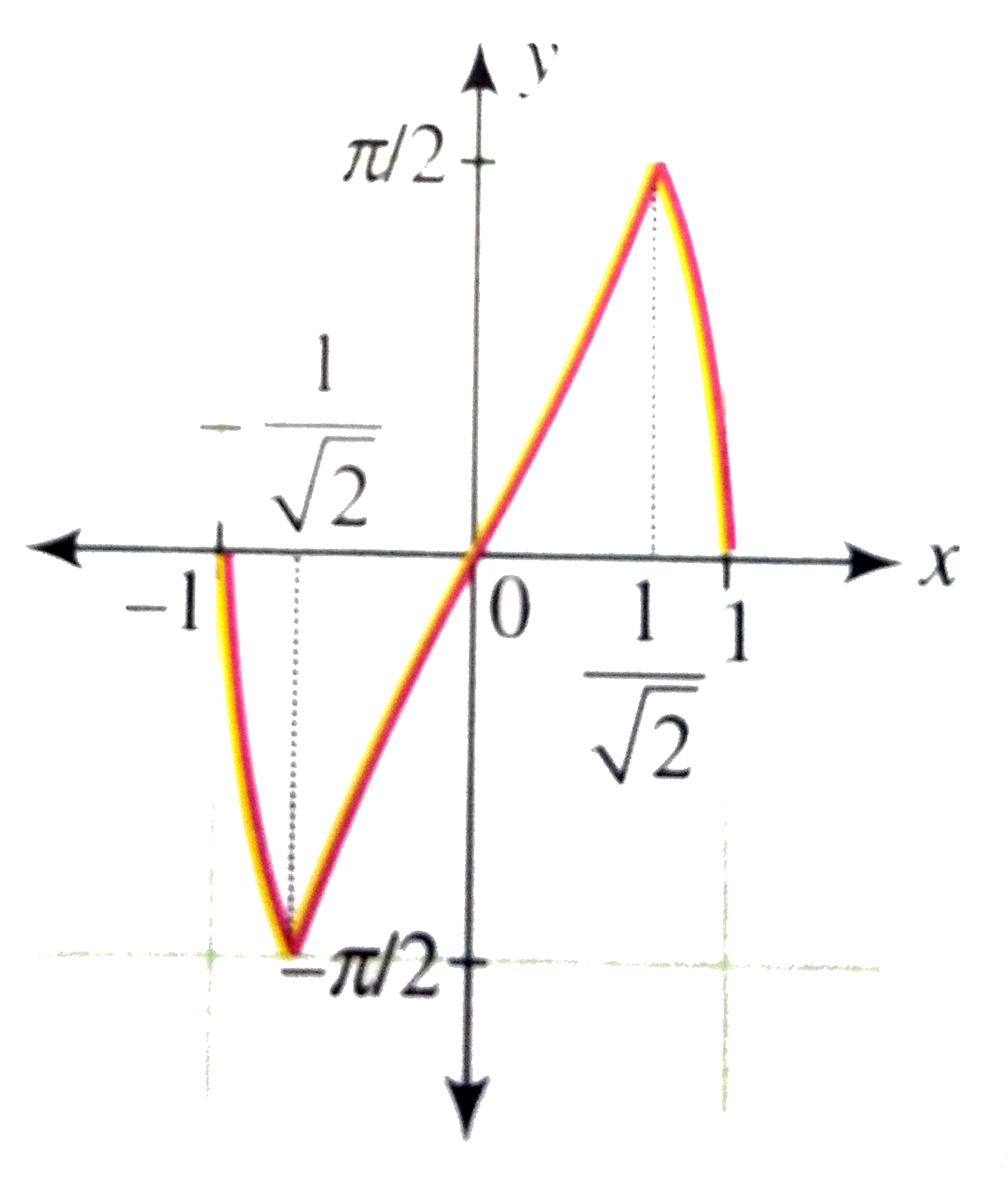InterviewSolution
Saved Bookmarks
| 1. |
Drawthe graph of y=sin^(-1)(2xsqrt(1-x^(2))) |
|
Answer» Solution :We have `y=f(X)=sin^(-1)(2xsqrt(1-x^(2)))` Clearly, the domain of the function is [-1, 1]. LET `x=sintheta, theta in[-pi//2,pi//2]` `rArr""theta=sin^(-1)x`  Now `sin(2xsqrt(1-x^(2)))=sin^(-1)(2 sinthetacostheta)` `=sin^(-1)(sin2theta)` `=sin^(-1)(sinalpha)," where "alpha in [-pi,pi]` Now consider the GRAPH of `y=sin^(-1)(sin alpha)," where "alpha in [-pi, pi]` From the grph, `y=f(x)=sin^(-1)(2xsqrt(1-x^(2)))=sin^(-1)(sin alpha)` `={{:(-alpha-pi,-pilealphalt-pi//2),(alpha, -pi//2alphalepi//2),(-alpha+pi,pi//2ltalphalepi):}` `={{:(-2sin^(-1)x-pi,-pile2sin^(-1)xlt-pi//2),(2sin^(-1)x,-pi//2le2sin^(-1)xlepi//2),(-2sin^(-1)x+pi,pi//2lt2sin^(-1)xltpi):}` `={{:(-2sin^(-1)x-pi,-pile2sin^(-1)xlt-pi//4),(2sin^(-1)x,-pi//pile4sin^(-1)xlepi//4),(-2sin^(-1)x+pi,pi//4ltsin^(-1)xltpi//2):}` `={{:(-2sin^(-1)x-pi,-1lexlt-1/sqrt2),(2sin^(-1)x,-1/sqrt2lexle1/sqrt2),(-2sin^(-1)x+pi,-1/sqrt2lexle1):}` `={{:(-2/sqrt(1-x^(2)),-1ltxlt-1/sqrt(2)),(2/sqrt(1-x^(2)),-1ltxlt-1/sqrt(2)),(-2/sqrt(1-x^(2)),-1ltxlt1):}` Clearly, y = f(x) is non-differentiable at `x=+-1/sqrt2` y=f(x) inreases for `x in (-1/sqrt2,-1/sqrt2)` and decreases for `x in (-1,-1/sqrt2)cup(1/sqrt2,1)` For f(x) `= -2 sin^(-1)x-pi` `f(-1)=-2sin^(-1)(-1)-pi=0,f(-1/sqrt2)=-2(-pi/4)-pi=-pi/2` Thus, `sin^(-1)(2xsqrt(1-x^(2)))` decreases from 0 to `-pi/2` when x increases from -1 to `-1/sqrt2`. For `f(x)=2sin^(-2)x` `f(-1/sqrt2)=2(-pi/4)=-pi/2` `f(1/sqrt2)=2(pi/4)=pi/2` Thus, `sin^(-1)(2xsqrt(1-x^(2)))" increases from "=pi/2"to"pi/2" when x in creases from "-1/sqrt2"to"1/sqrt2` For `f(x)=-2sin^(-1)x+pi` `f(1/sqrt2)=-2(pi/4)+pi=pi/2,f(1)=-2sin^(-1)(1)+pi=0` Thus, `sin^(-1)(2xsqrt(1-x^(2)))" decreases from "pi/2"to"0` When x increases from `1/sqrt2"to1`. From this INFORMATION, we can DRAW the graph of `sin^(-1)(2xsqrt(1-x^(2)))` as shown in the adjecnt figure. 
|
|